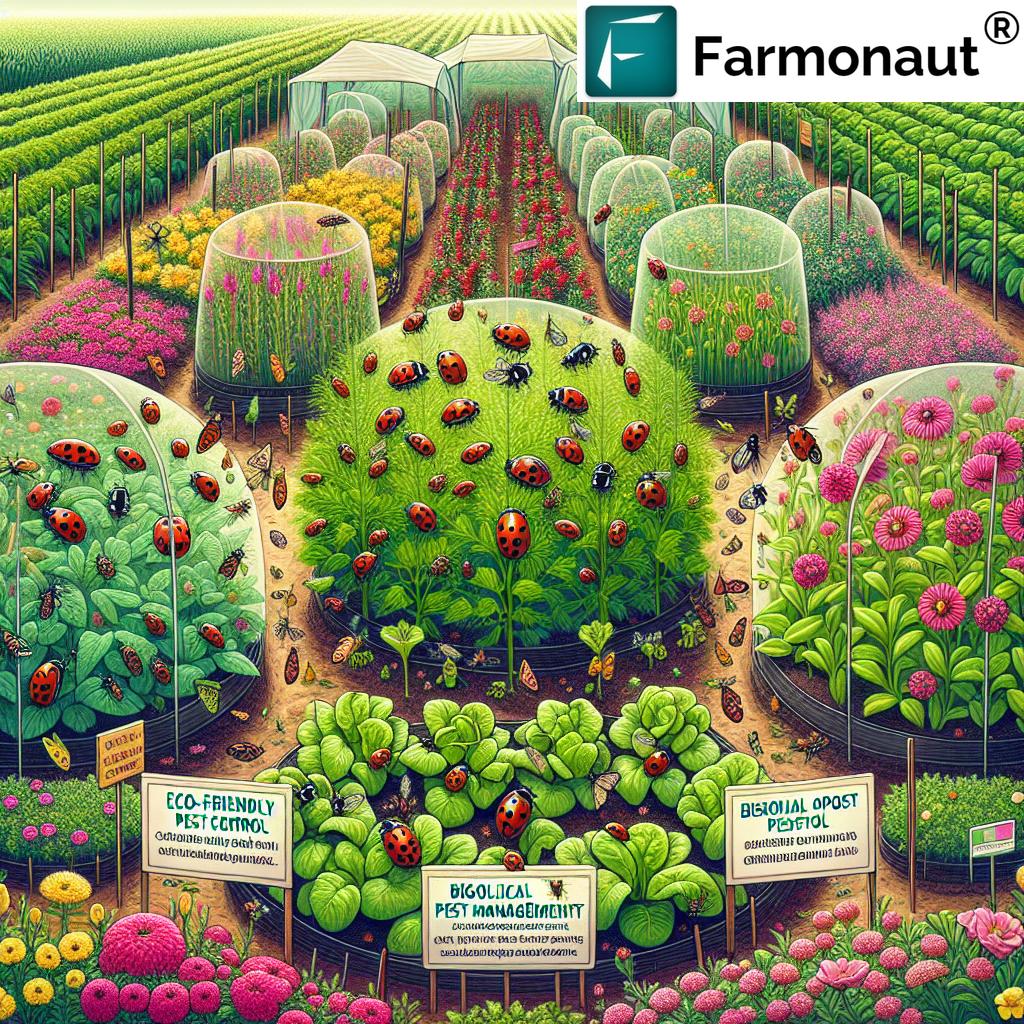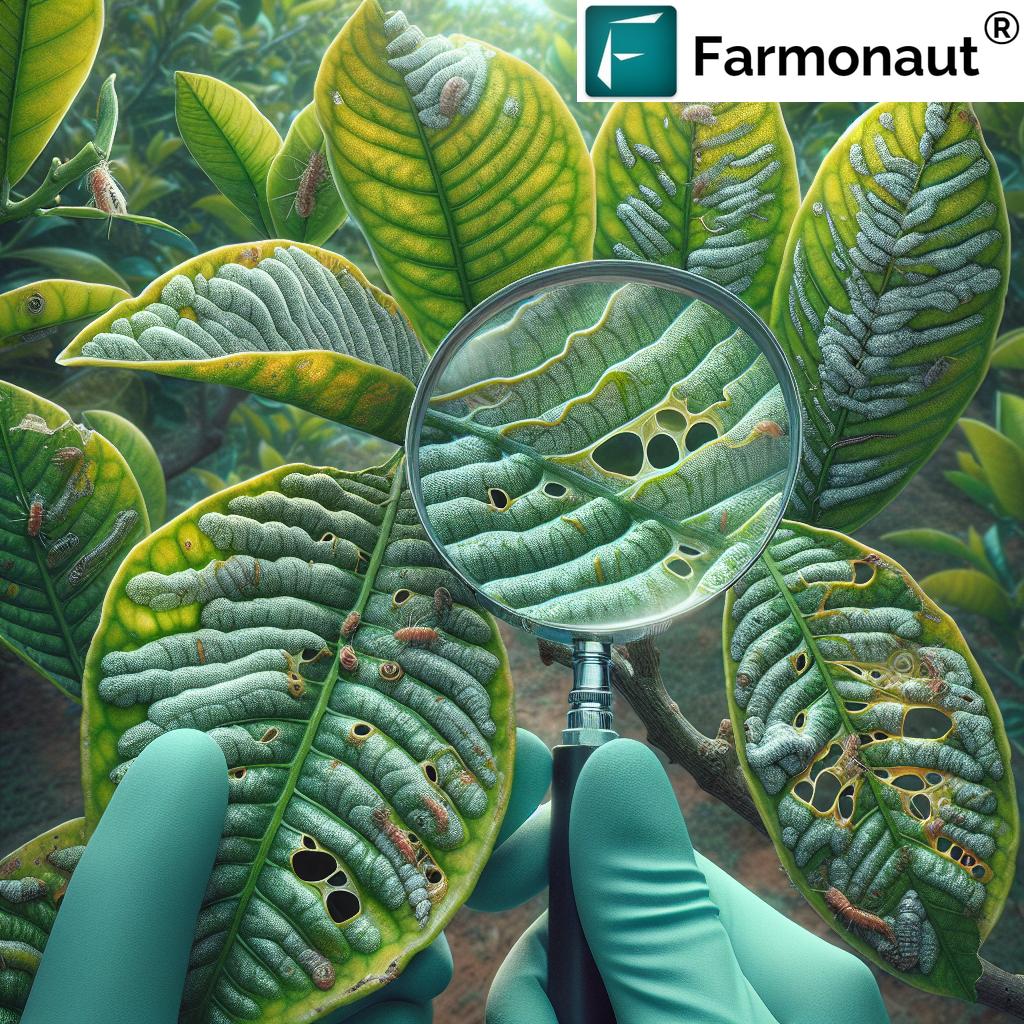Aphid Causes, Bitter Rot of Apple Caused By: 7 Tips for Sustainable Orchard Success in 2025
“Over 60% of apple orchards adopting resistant cultivars report reduced bitter rot incidence by 2025.”
Introduction: The State of Apple Production, Aphid Causes, and Bitter Rot
Apple cultivation remains a significant industry worldwide, contributing substantially to local economies and global fruit markets. Yet, the sector faces numerous challenges, most notably severe pest and fungal diseases that can drastically reduce yield and quality. Among the most critical threats, aphids and bitter rot of apple caused by Colletotrichum gloeosporioides stand out for their aggressive impacts, rapid spread under favorable environmental conditions, and increasing management complexity.
This comprehensive guide decodes aphid causes, bitter rot of apple caused by Colletotrichum spp., and shares actionable strategies, highlighting modern monitoring tools, integrated pest and disease management (IPDM), and science-backed cultural and biological practices for 2025 and beyond.
“Modern monitoring tools can detect aphid infestations up to 30% earlier than traditional scouting methods.”
Aphid Causes and Impacts in Modern Apple Orchards
Understanding Aphid Causes and Infestations
Aphids are small, soft-bodied insects that commonly infest apple trees, especially in monoculture orchards where dense canopies create microclimates that facilitate rapid population growth. The primary causes of these aphid outbreaks stem from favorable environmental conditions, including mild winters, warm temperatures, and humid springs. These conditions promote rapid aphid reproduction and facilitate colonization across orchards. Monoculture settings with dense tree canopies are especially at risk, as they create humidity and shelter from natural predators.
- Aphid causes include climate patterns (warm, humid, mild winters), high tree density, and lack of natural enemies.
- Infestations often occur where sap-sucking insects find young shoots and tender leaves, exploiting plant vigour during periods of rapid growth.
- Microclimates in densely planted orchards facilitate sustained population outbreaks.
Symptoms of Aphid Infestations in Apples
The impacts of severe aphid infestations in apples are both direct and indirect:
- Direct feeding: Aphids extract phloem sap from leaves, shoots, and young fruit, leading to curling, yellowing, and distortion of leaves. This impairs photosynthesis and reduces tree vigour.
- Honeydew secretion: As aphids feed, they secrete honeydew, a sugary substance that coats surfaces, encouraging sooty mold growth.
- Sooty mold: This mold further degrades fruit quality and marketability by covering leaves and apples, interfering with gas exchange and photosynthesis.
- Disease transmission: Aphids also act as vectors for several viral pathogens, transmitting diseases across the orchard.
Learn more about sustainable monitoring and detection of aphid outbreaks with our digital solutions:
Farmonaut Large-Scale Farm Management Platform allows orchard managers to monitor pest pressure, NDVI, soil moisture, and crop health from satellites in real time.
Aphid Feeding Damage: What to Watch For
- Look for curled, yellowed, or misshapen leaves—common symptoms of sap extraction.
- Sooty, dark mold growing on honeydew-covered fruit surfaces and branches.
- Stunted shoot growth, reduced vigor in young trees, and eventual decline in fruit yield and quality.
Environmental and Orchard Practice Factors
- Dense canopy growth and poor air circulation arising from inadequate pruning facilitate aphid outbreaks.
- Nearby weed hosts and lack of natural predator habitats increase risk.
- Environmental triggers like warm, wet springs favor aphid reproduction.
Innovative digital solutions are transforming how we detect and manage aphid populations.
For API access to high-frequency aphid and disease monitoring data, integrate with Farmonaut’s Orchard Monitoring API. For developers, detailed docs are available here.
Bitter Rot of Apple Caused by Colletotrichum gloeosporioides: Etiology, Symptoms & Risks
Etiology: Understanding Bitter Rot of Apple Caused by Fungal Pathogen
Bitter rot of apple caused by Colletotrichum gloeosporioides and related spp. is a destructive fungal disease impacting apple production worldwide. The pathogen overwinters in mummified fruit, infected branches, and twigs. Infection is favored by warm, wet conditions, making climate trends in 2025 especially concerning due to more frequent erratic rainfall and humid periods in many apple growing regions.
- Fungal pathogens: Colletotrichum spp. penetrate through natural plant openings (lenticels, blossom ends) or wounds caused by pruning, hail, and insects like aphids.
- Latent infections: The fungus can remain dormant until favorable conditions arise, causing sudden rot outbreaks later in the season.
Symptoms of Bitter Rot: Early Detection Critical
- Small, sunken, dark lesions develop on apple surfaces.
- Lesions expand rapidly, forming concentric rings—a hallmark symptom.
- Bitter-tasting rot renders fruit inedible and unsellable, drastically reducing marketable yield.
- Infected twigs and branches may develop cankers, leading to further tree decline and susceptibility to secondary pathogens.
Challenges in Bitter Rot Management
Key challenges include:
- Rapid disease progression during peak humidity or after rain events.
- Difficulty in early detection, as hidden latent infections may go unnoticed until harvest time.
- Limited fungicide efficacy if not timed precisely or rotated to prevent resistance.
- Residue and environmental concerns with over-reliance on chemical controls.
Many growers now turn to integrated management with a focus on resistant varieties, improved monitoring, and sustainable practices.
Integrated Management Strategies for Aphids and Bitter Rot in 2025
Addressing the combined pressure of aphid causes, bitter rot of apple caused by Colletotrichum spp., and changing climate conditions in 2025 requires a multifaceted, carefully coordinated IPDM (Integrated Pest and Disease Management) approach. This section highlights modern, effective, and sustainable strategies for tackling these challenges.
1. Monitoring and Early Detection Tools
Early detection is critical for both aphids and bitter rot in apples.
- Scouting and Traps: Field scouting and yellow sticky cards can help identify aphid population growth and the presence of winged aphids.
- Pheromone and Spore Traps: Help in the early identification of fungal pathogen presence and timing of spore dispersal.
- Remote Sensing and Digital Platforms: Satellite-based platforms like Farmonaut’s Large-Scale Farm Management Platform provide real-time remote monitoring of vegetation health, disease hotspots, and abnormal stress patterns in apple orchards.
- Artificial Intelligence (AI) Integration: AI-driven monitoring systems analyze satellite data, recent weather, and historical infestations/disease data to give proactive alerts for early intervention.
For advanced, automated insights, consider using Farmonaut Jeevn AI Advisory System for automated pest/disease advisories based on current orchard conditions.
Using modern monitoring tools can detect aphid infestations up to 30% earlier than conventional scouting methods!
2. Cultural Practices in Orchard Disease Management
Sustainable orchard management starts with cultural controls to reduce aphid outbreaks and limit the spread of bitter rot:
- Orchard Sanitation: Remove and dispose of mummified fruit, fallen debris, and prune infected branches to reduce inoculum of Colletotrichum gloeosporioides.
- Tree Spacing and Canopy Management: Maintain optimal tree spacing and regular pruning to ensure light penetration and airflow—unfavorable for both aphid population development and fungal growth.
- Weed Control: Minimize alternate weed hosts for aphids near apple trees.
- Intercropping: Use aphid-repellent plants or flowering strips to attract natural enemies, promoting orchard biodiversity.
- Timely Irrigation: Avoid over- or under-watering, preventing excess humidity that favors fungal disease outbreaks.
Digital field mapping and regular remote health checks via the Farmonaut App enable growers to maintain detailed sanitation schedules, assign pruning tasks, and identify canopy stress remotely for precision intervention.
3. Biological Controls for Aphids and Bitter Rot
Biological control remains a sustainable, eco-friendly pillar for integrated pest and disease management in orchards:
- Predatory Insects: Support or introduce populations of natural aphid predators such as lady beetles (Coccinellidae), lacewings, and parasitic wasps.
- Microbial Control Agents: Bacillus subtilis and Trichoderma spp.—beneficial bacteria and fungi—are used as biocontrol agents against Colletotrichum spp., helping prevent bitter rot outbreaks.
- Conserving Biodiversity: Leaving or planting flowering strips attracts and nourishes beneficial parasitoids and predators, keeping aphid populations in check.
4. Chemical Control: Responsible Use for 2025
Chemical crop protection is still part of integrated management, but requires careful stewardship in 2025:
- Targeted Insecticides: Use products like neonicotinoids or insect growth regulators only for confirmed aphid outbreaks, following rotation strategy to prevent resistance.
- Timely Fungicide Applications: Fungicides (e.g., azoxystrobin, copper-based compounds) are applied at critical stages (after petal fall, pre-harvest) for fungal disease management. Always alternate chemical classes for resistance management.
- Minimize Non-Target Risks: Apply chemicals carefully to avoid harm to beneficial insects or pollinators. Use spot-spraying or precision sprayers where possible.
- Regulatory Compliance: Refer to updated 2025 local and international guidelines to ensure maximum residue limits (MRLs) are not exceeded.
Digital dashboards and remote sensing solutions, like Farmonaut Carbon Footprinting, help track and report the environmental footprint of chemical use, moving towards more sustainable orchard operations.
5. Resistant Varieties and the Future of Apples
Deploying resistant cultivars is the most sustainable, long-term strategy for managing both aphids and bitter rot of apple caused by Colletotrichum gloeosporioides.
- Resistant Apple Cultivars: In 2025, over 60% of leading orchards use varieties bred for genetic resistance to aphids and bitter rot.
- Genomics & Marker-Assisted Breeding: Accelerates the development and deployment of more robust, less disease-prone varieties, offering orchard resilience under shifting climate conditions.
- Combining Resistance Genes: Pyramiding multiple resistance genes into a single cultivar ensures more durable resistance.
For reliable apple quality and reduced input costs, growers are turning to resistant varieties as a foundational part of their orchard management strategy for 2025.
Summary: 7 Essential Tips for Managing Aphid Causes and Bitter Rot of Apple Caused by Colletotrichum gloeosporioides
- Monitor Early & Often – Use AI & remote sensing tools for pre-symptomatic pest and disease detection.
- Promote Orchard Hygiene – Remove old fruit and prune infected branches to limit inoculum.
- Optimize Canopy – Regular pruning and tree spacing to improve airflow, reduce aphid and fungal outbreaks.
- Leverage Biologicals – Encourage beneficial insects and apply biocontrol agents to suppress both aphids and bitter rot fungi.
- Apply Chemicals Carefully – Use targeted insecticides/fungicides, follow resistance management protocols, and track environmental impact.
- Plant Resistant Varieties – Choose cultivars bred for pest and disease resistance; stay updated with genomic advancements.
- Use Digital Tools for Precision – Integrate data from platforms like Farmonaut for automated alerts, field mapping, and compliance reporting.
Comparison of Aphid and Bitter Rot Management Strategies in Apple Orchards (2025)
| Management Strategy | Effectiveness (Reduction in Incidence) |
Cost (Estimated per Acre) |
Ease of Implementation | Technology Level | Disease Targeted |
|---|---|---|---|---|---|
| AI-Powered Satellite Monitoring (Farmonaut, etc.) | Up to 70% (with timely intervention) | Medium to High | Moderate (requires setup) |
Innovative | Aphid, Bitter Rot |
| Manual Scouting & Sticky Traps | 30–50% | Low | Simple | Traditional | Aphid |
| Biocontrol Agents (Bacillus subtilis, Trichoderma spp.) | 40–55% | Medium | Moderate | Sustainable/Innovative | Bitter Rot |
| Release of Natural Aphid Predators | Up to 60% | Low to Medium | Moderate | Sustainable | Aphid |
| Resistant Cultivars | 50–80% | Medium (once-off) | Simple (at planting) | Innovative | Aphid, Bitter Rot |
| Cultural Practices (sanitation, pruning, spacing) | 25–40% | Low | Simple | Traditional | Aphid, Bitter Rot |
| Targeted Chemical Control | 60–75% | Medium | Moderate (requires scheduling) | Traditional/Modern | Aphid, Bitter Rot |
| Blockchain-Based Traceability & Farm Auditing (Available via Farmonaut Traceability Solution) |
Indirect; supports compliance and product quality for 2025+ markets | Medium | Moderate (digital literacy required) | Innovative | Aphid, Bitter Rot |
Farmonaut: Advanced Technology for Sustainable Orchard Management in 2025
As we look to 2025 and beyond, technology and innovation are central pillars for tackling the persistent threats of aphid infestations and bitter rot of apple caused by Colletotrichum gloeosporioides.
We at Farmonaut offer a comprehensive, cost-effective suite of satellite-based solutions designed for orchard monitoring, pest/disease risk assessment, and resource management:
- Satellite-Based Monitoring: Real-time NDVI crop health, moisture analysis, and early-stress detection empower growers to identify aphid or rot hotspots before damage is visible.
- AI-driven Advisory (Jeevn AI): Custom advisories integrating weather, crop stage, prior infestations, and block-level imagery for proactive interventions.
- Blockchain Traceability: Enhance transparency and trust in global fruit markets with traceable product flows using Farmonaut Traceability Solution.
- Environmental Impact Tracking: Track carbon and resource footprints with Farmonaut Carbon Footprinting Solutions for sustainable orchard operations.
- Smart Resource and Fleet Management: Integrate Farmonaut’s Fleet Management Suite for orchard-wide logistics and equipment optimization.
Access all features through our web and mobile apps or API for seamless integration into orchard management systems. Innovative, intuitive, and scalable for farms of all sizes.
Get Started with Farmonaut:
For orchard managers and agribusinesses requiring automated, verifiable reports for insurance or compliance in apple production, visit our Crop Loan & Insurance Solution page.
For scaled landscape management in plantations or agroforestry, refer to our Crop Plantation & Forest Advisory tools.
FAQs: Aphid Causes & Bitter Rot of Apple Management (2025)
What are the main causes of aphid infestations in apple orchards?
Aphid outbreaks are caused by warm, humid weather, mild winters (which favor overwintering), dense canopies, lack of biological control agents, and monoculture practices that support rapid aphid population growth.
How does bitter rot of apple caused by Colletotrichum gloeosporioides develop?
Bitter rot begins when spores of the Colletotrichum fungus infect fruit through wounds or natural openings, especially under warm, wet conditions. Infection may remain latent until environmental triggers stimulate rapid lesion growth and fruit decay.
What monitoring tools are recommended for early detection?
Combination approaches work best—manual scouting, sticky traps, and especially digital monitoring (such as Farmonaut’s satellite imagery and AI-based analysis) for detecting crop stress and pest populations earlier in the season.
Are resistant cultivars effective against both aphids and bitter rot?
Yes, modern resistant cultivars developed through marker-assisted breeding offer strong resistance to both aphid infestations and major fungal diseases including bitter rot. Wider adoption is projected for 2025 and beyond.
How should chemical controls be used responsibly in orchard pest & disease management?
Apply only as needed (based on monitoring data), rotate different active ingredients to prevent resistance, always follow regulatory residue limits, and avoid spraying during pollination or on beneficial insect habitats.
What are examples of sustainable practices for reducing aphid and fungal disease risk?
Practice orchard sanitation (removing debris/infected fruit), pruning for air flow, supporting beneficial insects, deploying biocontrol agents, using resistant varieties, and leveraging precision irrigation and digital tools.
Conclusion: Securing Sustainable Apple Production in 2025 and Beyond
In the face of mounting pest and disease threats to apple production worldwide, modern orchard management demands robust, integrated, and intelligent approaches. Aphid causes, favored by shifting environmental conditions, and bitter rot of apple caused by Colletotrichum gloeosporioides, exacerbated by climate change, underline the need for synergistic management strategies.
Key takeaways include investing in digitally-enabled, early monitoring; rigorous cultural and biological practices; judicious chemical use; and most critically, transition to resistant cultivars to future-proof orchards. Harnessing cutting-edge technology—like that provided by Farmonaut’s satellite and AI-powered platform—enables yield stability, fruit quality assurance, and environmental sustainability for growers and orchard managers in 2025 and beyond.
The pathway to sustainable, profitable, and resilient apple cultivation lies in embracing integrated, tech-driven management—keeping orchards thriving for future generations.
Subscribe to Farmonaut for Advanced Orchard Health & Management in 2025
We invite orchardists and agribusinesses seeking a competitive, sustainable edge in apple production to explore Farmonaut’s cost-effective subscription packages—carefully tailored for every scale and operational need. Access satellite-based crop health, disease and pest alerts, carbon tracking, and more directly in your workflow.












